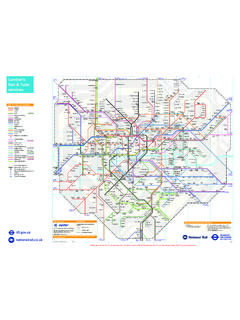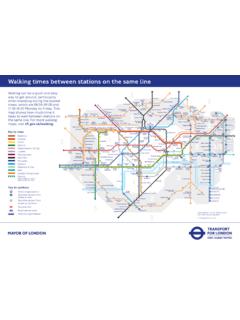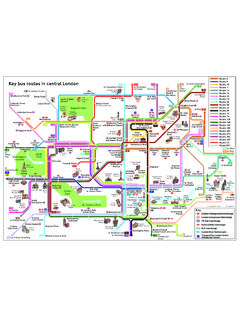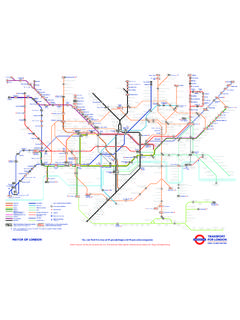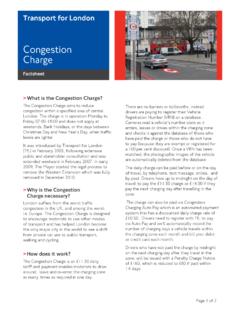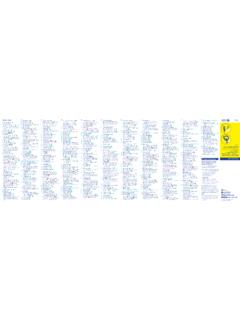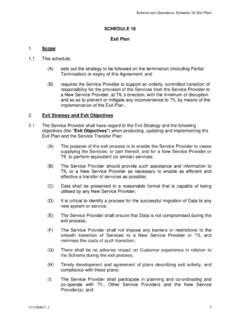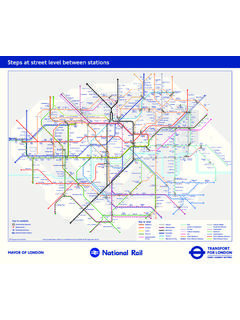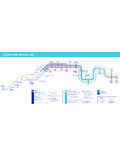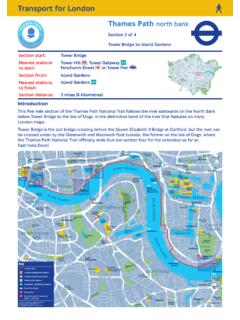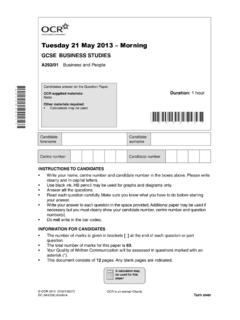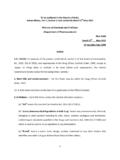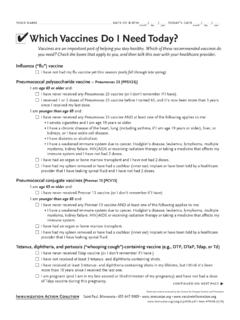Transcription of Agenda Item 4 Transport for London Projects and …
1 1 Agenda Item 4 Transport for London Projects and planning Panel Subject: TfL Pathway Date: 8 May 2013 1 Purpose At its meeting of 8 January 2013 the Panel asked for further information about Pathway, TfL s new project and programme methodology. The Panel is asked to note the paper. 2 Background In 2012 a pan-TfL Programme Management Office (PMO) was established, creating an opportunity to rationalise project and programme management methodology across TfL. A specific requirement as articulated in the Commissioner s 2012 Message was to develop a common project methodology.
2 Underpinned by a common management system to ensure a clear approach to how we deliver together . 3 Pathway Development and Implementation In September 2011 (re-confirmed in November 2011) the Leadership Team approved the creation of a common project delivery methodology for TfL, now known as TfL Pathway. TfL Pathway consists of four main elements: (a) Lifecycles: A common set of lifecycles to cover Projects , programme and delivery portfolios the vehicles through which delivery takes place. (b) Product Matrix: This defines the documents and other evidence (products) that are typically expected at each lifecycle stage and which would normally demonstrate satisfactory completion of the key activities of that stage.
3 Some of these documents (products) will be mandatory, for example Requirements, Execution Plan, Schedule, Risk Plan and Budget, while others will be dependent of the characteristics of the project , for example Construction Management Plan for construction Projects . (c) Handbooks: There are eleven handbooks covering the core of project delivery and aligned to the separate sections of the Product Matrix. The handbooks provide guidance on best practice for each of the key project management activities. These are: Benefits and Value, Commercial (Procurement and Contract Management), Commission and Handover, Consents, Construction, 2 Investment Governance, Health, Safety and Environment, Manage the project (focusing on reporting and controls), People Change, Risk Management and Sponsorship and Requirements.
4 In addition there is a Pathway Manual, which acts as an overview guide. (d) Pathway Product Management Plan: A questionnaire to help delivery teams decide which products may be applicable dependent on the characteristics of the project . TfL PMO worked with more than 300 practitioners across the business to develop TfL Pathway and its content. This has been one of the first examples of a large number of specialists gathering from across the organisation to develop a tool applicable at a TfL level. TfL Pathway is based on accepted good practice project management principles in particular Prince2, Managing Successful Programmes and P3M3.
5 Feedback from pilot Projects has been very positive. A further aspiration for TfL was to develop a common management system to build commonality across different functions. Work is ongoing, for example, to harmonise Human Resources processes and documentation. TfL Pathway is the first element of this developing One-TfL Management System. The adoption of TfL Pathway is a fundamental element of TfL s plan for enhancing delivery capability maturity. This can be formally measured through the Cabinet Office s P3M3 model. Multiple processes across an organisation results in low maturity.
6 The creation of a common methodology and successful embedment enhances it and there is a proven link between maturity increase and delivery efficiency/performance. More consistent working in the business should also improve the quality of submissions to the Panel and provide improved confidence in delivery. Successful implementation of TfL Pathway is directly in line with significant elements of the TfL Story. TfL Pathway enables consistent and effective working (Value for Money) and hence greater mobility for TfL staff across the organisation (Our People). TfL Pathway is the first element of the proposed TfL Management System and will enable greater integration.
7 The proposed improvements will clarify governance requirements and provide a foundation for increased effectiveness of the governance processes. One particular element of TfL Pathway that is new across the TfL business covers Investment Governance. Clearer guidance on this topic was one of the consistent requests arising from project and programme teams and Sponsors across the business. There were instances of poor understanding of the requirements leading to poor submissions, to rejection and then to delay. To increase clarity and consistency, five TfL Pathway products have been int roduced to support improved investment governance: (a) an Investment Governance Handbook defining governance arrangements expected of all TfL investments; 3 (b) the Integrated Assurance and Approvals Plan, which provides certainty for sponsors and delivery managers by defining, from the outset, the assurance and approvals required throughout the life of the investment.
8 (The National Audit Office strongly recommends such an approach); (c) the Integrated Assurance Review assures the work, prior to entering the Authority process and integrates the current CGAP process with other assurance activities; (d) a new single template has been developed for requesting project authority at operating boards or using delegated authorities, and will replace the existing multiple templates; and (e) published Authority Routes define, for each type of authority, the route a submission should progress through for assurance, endorsement and approval to gain the required authority.
9 Guidance has been provided for the establishment of Programme Boards including terms of reference; a more ordered process in programmes should lead to improved oversight at the operating level. The Rail and Underground Board in particular has endorsed this step for all the programmes in The Rail and Underground Plan, but it is optional for other areas. Programme Boards strengthen the operational business focus and leadership for programmes, but they do not replace governance provided at TfL Board or Committee level. Appropriate assurance is a condition of gaining authority. Previously, only Estimated Final Cost (EFC) was used as a trigger for the level of scrutiny.
10 EFC has now been complemented by other key risk factors including Technology (new or proven), Complexity, Procurement, Change Impact and Reputational Risk and planning Consents. The implication of this is that lower value but high risk Projects may now be required to provide the correct level of assurance where, previously, they may not have been visible. The Governance system will remain under formal change control. A list of individuals and their authority levels will be maintained centrally by TfL PMO and published in TfL Pathway. There will be training to improve the competence of those people planning , authoring, assuring, endorsing and approving authority submissions.
